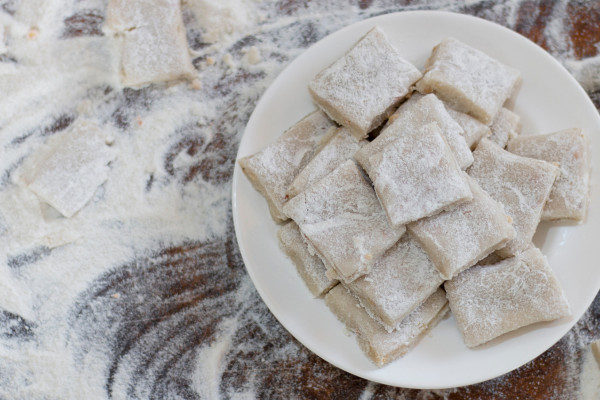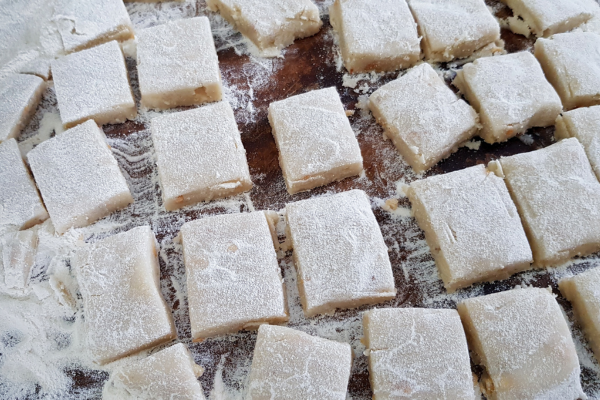The Sweet Tradition of Sri Lankan Aluwa: Recipe and Cultural Significance – Nadeeka – eLanka

In the vibrant tapestry of Sri Lankan cuisine, Aluwa stands out as a beloved sweet treat deeply embedded in the cultural fabric of the island nation. With its rich history and unique blend of flavors, Aluwa holds a special place in the hearts and taste buds of Sri Lankans. Let’s delve into the origins, ingredients, and preparation of this delightful confection.
Origins and Cultural Significance: Aluwa has a long-standing presence in Sri Lankan culinary heritage, with roots that trace back centuries. Originally enjoyed during auspicious occasions and festive celebrations, this sweet delicacy has become a staple in Sri Lankan households, cherished for its symbolic significance and delectable taste.
Traditionally, Aluwa is prepared during cultural festivals such as Sinhala and Tamil New Year, weddings, religious ceremonies, and other special occasions. It symbolizes prosperity, happiness, and the spirit of togetherness, making it an integral part of communal gatherings and familial traditions.

Ingredients: The ingredients for Aluwa vary slightly depending on regional preferences and family recipes. However, the essential components typically include:
- Rice flour or roasted rice flour
- Jaggery (palm sugar) or sugar
- Coconut milk
- Ghee (clarified butter)
- Cashew nuts, almonds, or other nuts (optional)
- Cardamom powder
- Raisins (optional)
- Sesame seeds (optional)
Recipe: Here’s a simplified version of the traditional Sri Lankan Aluwa recipe:
Ingredients:
- 2 cups rice flour
- 2 cups grated jaggery or sugar
- 1 cup thick coconut milk
- 1/2 cup ghee
- 1/2 teaspoon cardamom powder
- Handful of chopped cashew nuts and raisins (optional)
- 2 tablespoons sesame seeds (optional)
Instructions:
- Heat a non-stick pan or heavy-bottomed pan over medium heat.
- Add ghee to the pan and let it melt.
- Once the ghee is melted, add grated jaggery or sugar to the pan.
- Stir continuously until the jaggery or sugar melts completely and forms a thick syrup.
- Gradually add rice flour to the syrup while stirring continuously to avoid lumps.
- Pour in the thick coconut milk and continue stirring until the mixture thickens.
- Add cardamom powder and mix well to incorporate the flavor.
- If using, add chopped cashew nuts, raisins, and sesame seeds to the mixture and stir until evenly distributed.
- Continue cooking the mixture until it thickens further and starts to leave the sides of the pan.
- Once the mixture reaches a dough-like consistency, remove it from the heat and let it cool slightly.
- Grease a flat tray or plate with ghee and transfer the mixture onto it.
- Use a spatula or your hands to flatten and shape the mixture into a smooth, even layer.
- Allow the Aluwa to cool completely before cutting it into desired shapes, such as squares or diamonds.
- Serve and enjoy this delectable Sri Lankan sweet with loved ones during festive occasions or as a delightful treat any time of the year.
Conclusion: Sri Lankan Aluwa is not just a dessert; it’s a symbol of tradition, heritage, and the warmth of community gatherings. Its preparation requires patience, skill, and a deep appreciation for culinary craftsmanship. Whether enjoyed during cultural festivities or as a sweet indulgence on a regular day, Aluwa continues to evoke a sense of nostalgia and belonging among Sri Lankans, keeping alive the rich flavors and customs of the island nation.
Click here to receive your free copy of the eLanka Newsletter twice a week delivered directly to your inbox!







